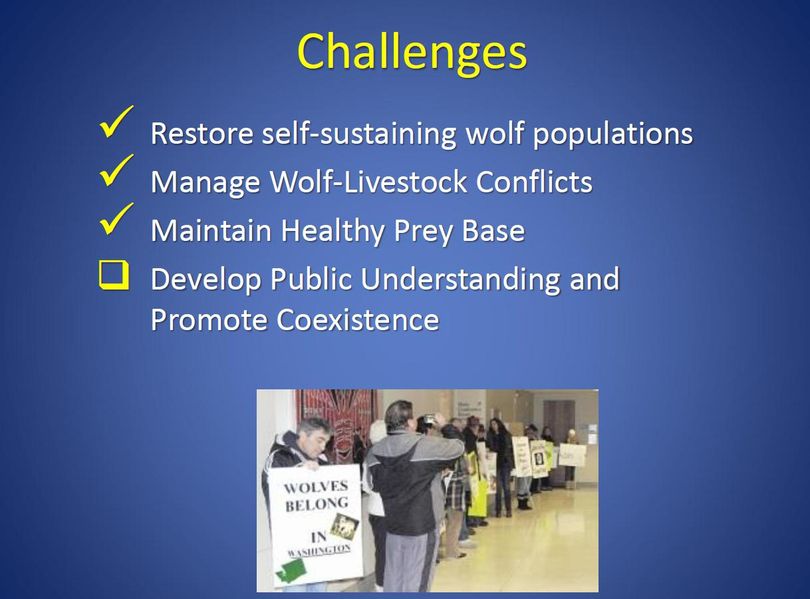Hunters tell it like it is at Lynnwood wolf management meeting

ENDANGERED SPECIES -- As predicted, the Washington Department of Fish and Wildlife-sponsored public meeting on wolf management held Tuesday in Lynwood had a different tone than the similar meeting held Oct. 7 in Colville.
The public in Lynnwood blasted the state for killing any wolves even to protect livestock. Cattlemen and hunters in Colville were enraged by the state's reluctance to take out entire packs of wolves.
I've seen little TV or mainstream newspaper reports from the Western Washington meeting in which state wildlife managers explained their wolf management actions and took public comment.
In contrast, the Colville meeting was attended by three TV stations, reporters from The Spokesman-Review and other papers and an AP reporter. Two different stories were on the AP wire the next day documenting how state officials got their butts chewed in northeastern Washington.
It's safe to say there weren't as many vegan-related bumper stickers on cars parked outside the Colville meeting. No vocally angry cattle ranchers ranted at the Lynnwood meeting, although a few hunters showed up to say what was on their minds.
Andy Walgamott of Northwest Sportsman Magazine has a thoughtful report on the Lynwood meeting.
Said Walgamott, taking off on one hunter's assurance that wolves eventually would be hunted in Washington despite the arguments that no wolves should be killed:
Really, it’s a success story when you can get to the point that hunts on any species can be held, kind of like the comeback of elk that allowed for seasons in this state by the early 1900s, whitetails in Missouri by 1931 and elsewhere in the East, bandtail pigeons by the early 2000s in the Northwest.
Washington's wolf management plan requires 15 successful breeding pairs in three distinct regions of the state for three straight years, or 18 in any one region before wolves would be hunted in the state.
By contrast, Oregon state rules call for launching a delisting process for wolves when Eastern Oregon has four breeding pairs for three consecutive years. That delisting from endangered species rules could start next year judging from the progress wolves are making.
Washington has a tough road to travel in the next few years as wolves continue to expand. Walgamott let Nate Pamplin, WDFW's wildlife program director have the last word in his report on the Lynnwood meeting:
Even as a self-identified counselor gave WDFW’s crew some psychoanalysis about a little chart they put together that showed what the agency hears from both sides, Pamplin noted:
“I don’t have the easy button. We heard a lot of good ideas tonight. We’re going to recover wolves. We’re going to manage wolf-livestock conflicts. We know wolf-ungulate issues are coming. We need to do better outreach.”
